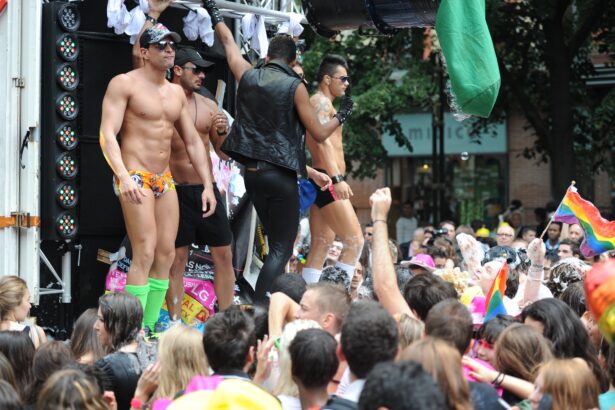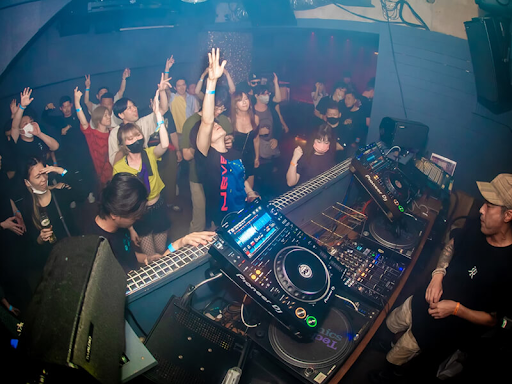The Origin: What Are Gogo Dancers?
Gogo dancers are special dancers who entertain patrons at nightclubs and other events. They are generally there to keep the energy high and hype people up while they’re partying. Gogo dancers became popular in the ‘60s when a French bar named Whiskey a Gogo employed the first gogo dancers to entertain their customers. This trend quickly caught on and spread across the world, including the United States, where it became very popular, and eventually made its way to Japan.
Gogo dancing also made its home in the gay community, with scantily-clad gogoboys commonly seen as hype men at gay nightclubs, parties, LGBTQ+ festivals and more. In this article, I’ll explain a little bit more about gogo dancers and gogoboys, where to find them, and how gogo dancing came to be.
What Do They Do?
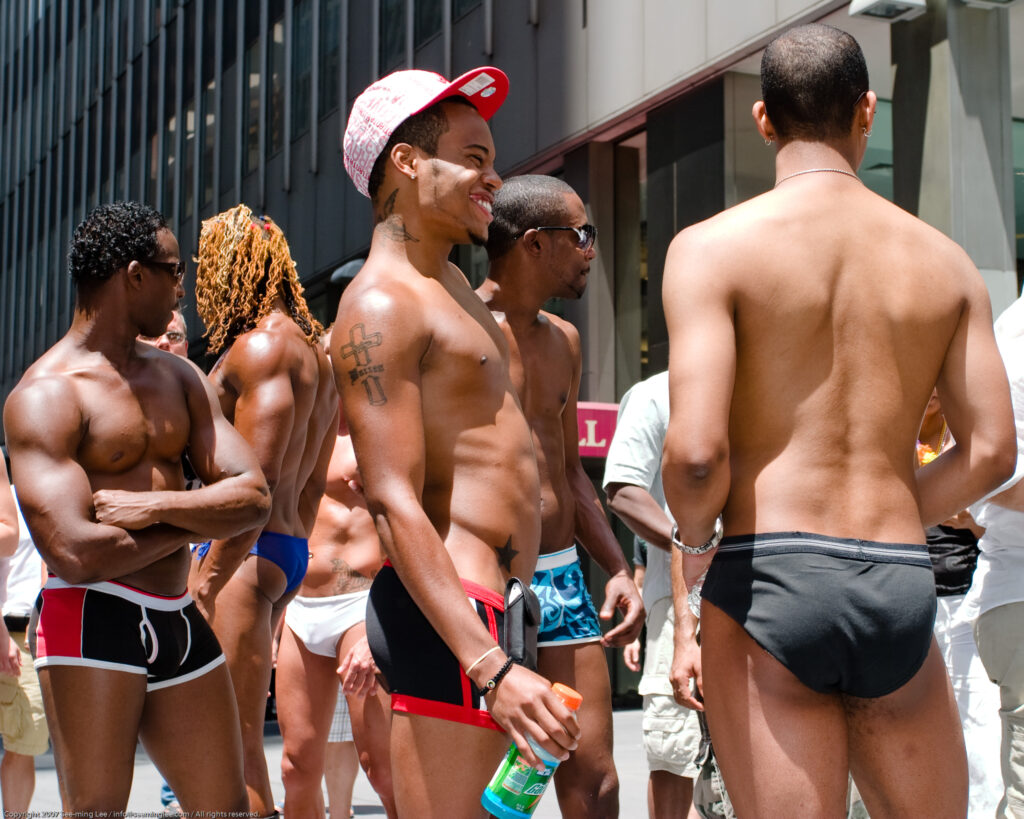
Gogo dancers, especially gogoboys, serve two main purposes at a nightclub or other event. The first is, as I talked about before, to raise the energy of the crowd so their spirits stay high and they stay at the club. The second is for them to show off their body, usually in skimpy outfits, to keep customers coming back to the venue. Hiring gogo dancers is really more of a business decision than anything!
Why Are They So Popular?
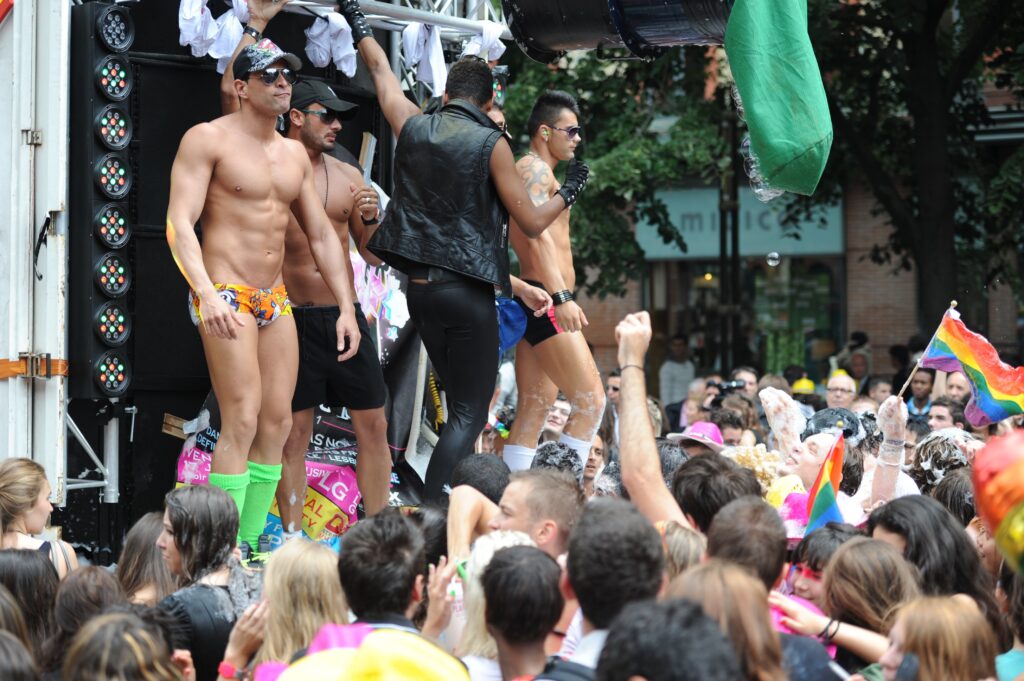
Gogoboys are especially popular in gay clubs because they’re there specifically for the customers’ entertainment. Like I said before, they usually wear skimpy outfits (often only underwear), and might even go without clothes depending on the laws of the area. So, in this way, they appeal to gay men going to clubs. This is, again, a big moneymaker, so a lot of gay clubs are incentivised to have gogoboys to draw in more patrons.
However, unlike strippers, gogoboys are not included under the same laws that protect strippers from customers touching them. So, customers can touch a gogoboy pretty much anywhere. Like it or not, this is usually part of the job, and guys who gogo dance at gay clubs have to be aware of this before signing on to a gig.
History of Gogo Dancers

Gogo dancing became a thing in the 1960s, and at the time, most gogo dancers were female. They usually performed at night clubs that didn’t cater to gay men, and dressed in stylish, revealing club attire, hyping up customers while they danced the night away. They often danced in cage-like structures, both to keep them separate from the crowds and so they’re easily identifiable as gogo dancers.
Gogo dancing, starting in the ‘60s, was originally done mostly by women, before it became popular in the gay community. Making its debut in the U.S. in California, popularized by legendary gogo dancer Carol Doda, who performed her famous topless gogo act for 22 years in San Francisco, and at the Los Angeles club named Whiskey a Gogo, taking its name from the aforementioned French bar.
By the 1970s, gogo dancing had lost popularity among the general public, and became more associated with adult entertainment than with regular nightlife. But, it continued to be popular at gay clubs, where it’s still in full swing to this day. It also made its way to Japan, by way of many gay creatives such as Tokyo-based gogoboy, Usak.
Are Gogoboys the Same as Gogo Dancers?
“Gogoboy” Refers to Gay Gogo Dancers
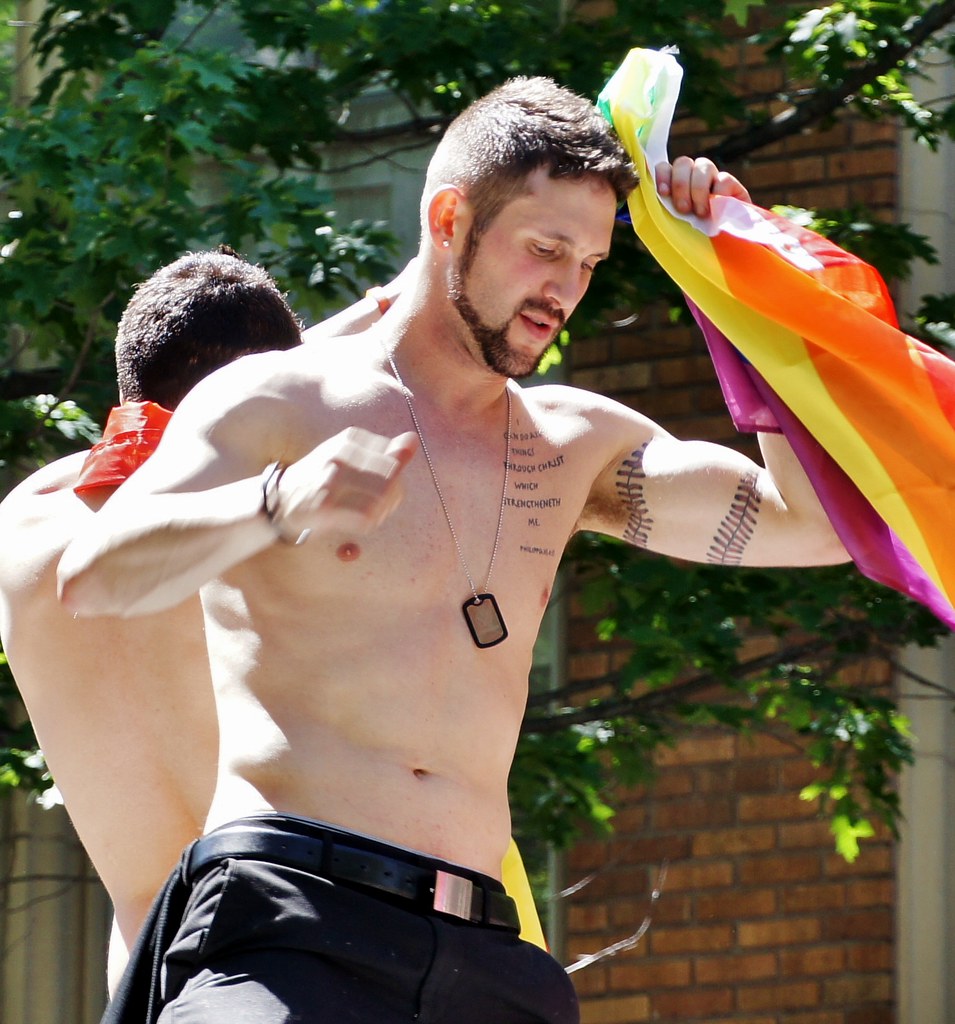
What is the difference between a gogo dancer and a gogoboy? Well, “gogo dancer” refers to anyone who gogo dances; this could be women, men, nonbinary people etc. But, a “gogoboy” is specifically a male gogo dancer, usually one who dances at gay clubs. So, in short: all gogoboys are gogo dancers, but not all gogo dancers are gogoboys!
Another thing that differentiates gogoboys at gay clubs from other gogo dancers is that club patrons are often allowed to touch gogoboys while they’re dancing. While other gogo dancers usually dance in a cage or on a stage above, apart from the audience, gogoboys get up close and personal with patrons!
This is also how gogoboys get a lot of their tips. Basically, patrons slip cash into their underwear or other garments, and the gogoboy takes this money home at the end of the night. Love it or hate it, this is currently how it’s done.
When Did the Concept of “Gogoboys” Start?

“Gogoboys” became especially popular at gay nightclubs in the 1980s, and have remained on trend in such circles ever since. In addition to clubs, gogoboys often dance at drag shows and LGBTQ+ pride festivals. Any queer party event that needs people to hype up the crowds may very well have some gogoboys.
However, gogoboys were originally an offshoot from the majority female gogo dancers of the ‘60s. Therefore, they act as a bit of a relic of a wider trend from decades ago that persists to this day only in the gay community. It’s interesting to see how this trend has evolved at gay clubs, adapting to modern culture, while the overall popularity of gogo dancers has completely died out.
Where Can You See Gogoboys?
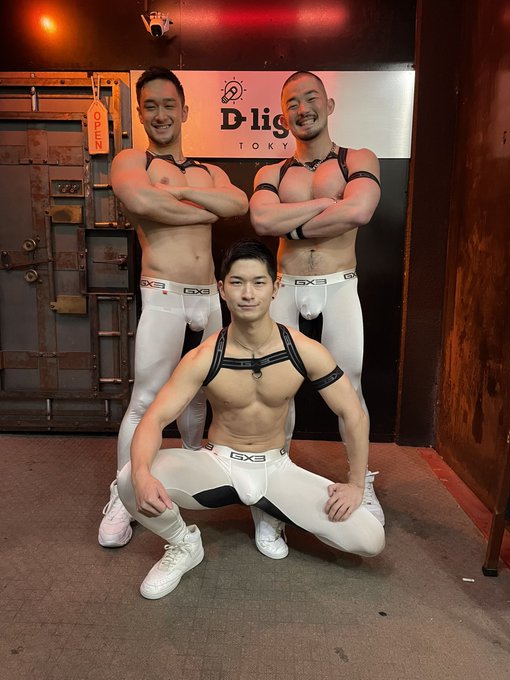
Almost any gay club with enough space that draws large crowds will probably have gogoboys. They are pretty ubiquitous in the gay club scene. When it comes to Japan, Tokyo has its own club centered specifically around gogoboys named Gogo Boys’ Bar “Tokyo Gogos”!
You can also find gogoboys at LGBTQ+ pride parades and festivals. They’ll often be dancing atop parade floats, or at pride parade afterparties such as Tokyo Pride Beats. So, if you’re interested in a certain venue or event, investigate a little on their website to see if they have gogoboys.
Gogoboys in Japan
Even at gay clubs in Japan, you will often find gogoboys. If you want to know more about which clubs in Japan have the best gogoboys, check out this article!
Conclusion
Gogoboys and gogo dancing are cultural phenomena that bridge the gap between general nightlife entertainment and adult entertainment. The side of the spectrum that each gogoboy leans toward depends on the club, the area, and the night in question. So, with this in mind, feel free to get started researching gogo events near you to see which one is the best match!

